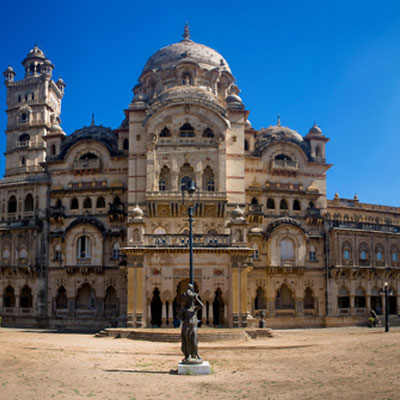Baroda (Vadodara) - Gujarat
Just two hours from Gujarat, Vadodara is a beautiful erstwhile destination, known before as Baroda. On the banks of the Vishwamitri River,
Baroda is a culturally strong industrial hub. Vadodara means a place full of Banyan trees and to pronounce easily, Britishers named this place Baroda.
It later got changed into Vadodara again in 1974. The underground drainage line was introduced to this place in 1895 making Vadodara one of the best
planned cities in India. In 1906, Maharaja Sayajirao III introduced primary education in Vadodara while the 8th richest man on earth Maharaja
Pratap Singh Gaekwad was also residing in the heritage town of Vadodara. From 1721 to 1947, Vadodara served as the royal home of Gaekwads. As the Marathas held their forces stronger than
the Mughals, the reign of Gaekwads began in 1721. As a fief, Peshwa Bajirao gave Vadodara to Gaekwads. While the Maratha Empire failed to
continue its domination after the 19th century. The architectural prowess of Gujarat shimmers in the Indo-Saracenic architecture of Laxmi Vilas Palace.
It nearly took 12 years (1878 - 1890) to complete building Laxmi Vilas Palace, the erstwhile home of Maharaja Sayaji Rao III.
Major Charles Mant was the architect behind this impeccable palace. A beautiful royal corridor that had implanted the idea of
every religion in its palatial building. Domes like the ones seen in Mughal’s architecture, towers that are similar to churches,
Jain and Hindu motifs, and Gothic elements along with an elevator make Laxmi Vilas Palace a regal icon of unity in diversity.
There are Belgian-style glass windows, Venetian mosaic floor, and armoury section showcasing Aurangzeb’s sword as well as Ravi
Varma paintings. This place is four times the size of Buckingham Palace. You can spend more than 2 hours in this spectacular museum where artefacts of the world are safeguarded.
They are priceless statues, the erstwhile personal collections of Maharaja Sayajirao, and archaeological finds of the Mughal empires.
Different types of rocks, musical instruments, and dresses heralding the tradition of the yester eras flock up this heritage building
dolled up in red. There is an interesting skeleton of a Blue Whale that is 22m in length while there are speculations of Egyptians
Mummies inside this historic museum. As the mausoleum of Vadodara rulers, this heritage site was built by Maharaja Sayajirao Gaekwad in 1936.
Inside this decorated Gaekwad building, travellers can explore the paintings of Nandalal Bose who was recognized as a National Treasure.
There are artworks related to Mahabharata and Ramayana in this artistically sound setting.
History of Vadodara
Places to Visit in Vadodara
Laxmi Vilas Palace
Baroda Museum and Picture Gallery
Kriti Mandir
How to reach Vadodara
Rail : Vadodara Junction Railway Station is the nearby railway station which runs superfast trains like Rajdhani and Shatabdi expresses, connecting Mumbai and Delhi.
Air : Vadodara has its own airport but only flies domestic flights and so Sardar Vallabhai Patel International Airport in Ahmedabad (100 km away) is the nearest international airport
Road : Major states like Rajasthan, Maharashtra, and Madhya Pradesh are connected to the excellent roadways of Vadodara.